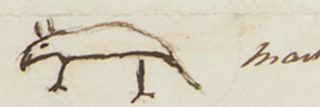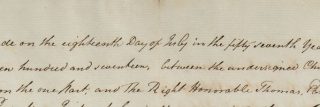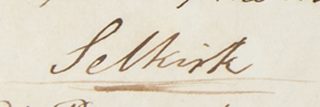Who was Chief Peguis?
One of five chiefs in the Red River Valley, Chief Peguis is a name familiar to this day to all people living in southern Manitoba.


One of five chiefs in the Red River Valley, Chief Peguis is a name familiar to this day to all people living in southern Manitoba.

Revisit the 2017 events relating to the 1817 Peguis Selkirk Treaty, which represented peace, order and mutual cooperation.

Where was Lord Sekirk born and when did he come to this region? Who did he represent and what were his objectives in the Red River valley?
Video: The Selkirk Settlers and Thomas Douglas-The 5th Earl of Selkirk from PBS – Prairie Public Broadcasting Fargo, North Dakota.
The meaning of The Peguis Selkirk Treaty of July 18, 1817 PART TWO with Bill Shead, John Perrin and Terry MacLeod.
In the Royal Collection Trust is a painting by Ojibway artist Eddy Cobiness (1933-1996) entitled “Signing of the Lord Selkirk Treaty”. It was painted in 1970. It was presented to Her Majesty The Queen during a Royal Visit to Manitoba in July 1970. The original painting is in Buckingham Palace, London.
This video explains the Peguis Selkirk Treaty. Terry MacLeod interviews Bill Shead and John Perrin.
Check out these two interesting books about Peguis and the Red River Settlement http://www.redriverancestry.ca/PEGUIS-1774.php
SGT. TOMMY PRINCE, MM, SS Tommy Prince was the great great grandson of Chief Peguis, who led a band of Saulteaux from Sault Ste. Marie to St. Peters north of Selkirk, Manitoba around 1790. Tommy was born in Petersfield, Manitoba in October of 1915, one of eleven children. Tommy enlisted in the 1st Corps Field
CBC Radio’s Tapestry explores the impact of The Doctrine of Discovery which shaped settler/church/indigenous relations the world over. http://www.cbc.ca/radio/tapestry/reclaiming-indigenous-spirituality-1.3636858/500-years-ago-pope-gives-permission-to-conquer-indigenous-people-1.3637062
The Selkirk Settlement 1811-1821: Maureen Matthews D. Phil. (Oxon) Curator of Cultural Anthropology The Manitoba Museum When Lord Selkirk initiated an agricultural colony at the forks of the Red and Assiniboine Rivers, he was responding to a world in transition. Liberalism and industrialization challenged existing world views; the rise of the American and French republics
The Peguis Selkirk Treaty. It’s the first Treaty signed in western Canada and it was signed before there even was a Canada. It marks the beginning of the relationship between First Nations and the Crown in western Canada. It shaped not only Winnipeg and Manitoba but also the nation itself. Thomas Douglas, 5th Earl of
Details from the official invitation On behalf of the Honourable Catherine McKenna, Minister of the Environment and Climate Change, Minister responsible for Parks Canada, and The Honourable MaryAnn Mihychuk, Member of Parliament for Kildonan-St. Paul and the Historic Sites and Monuments Board of Canada invite you to the unveiling of a plaque commemorating the national historic significance of CHIEF PEGUIS The ceremony will take place